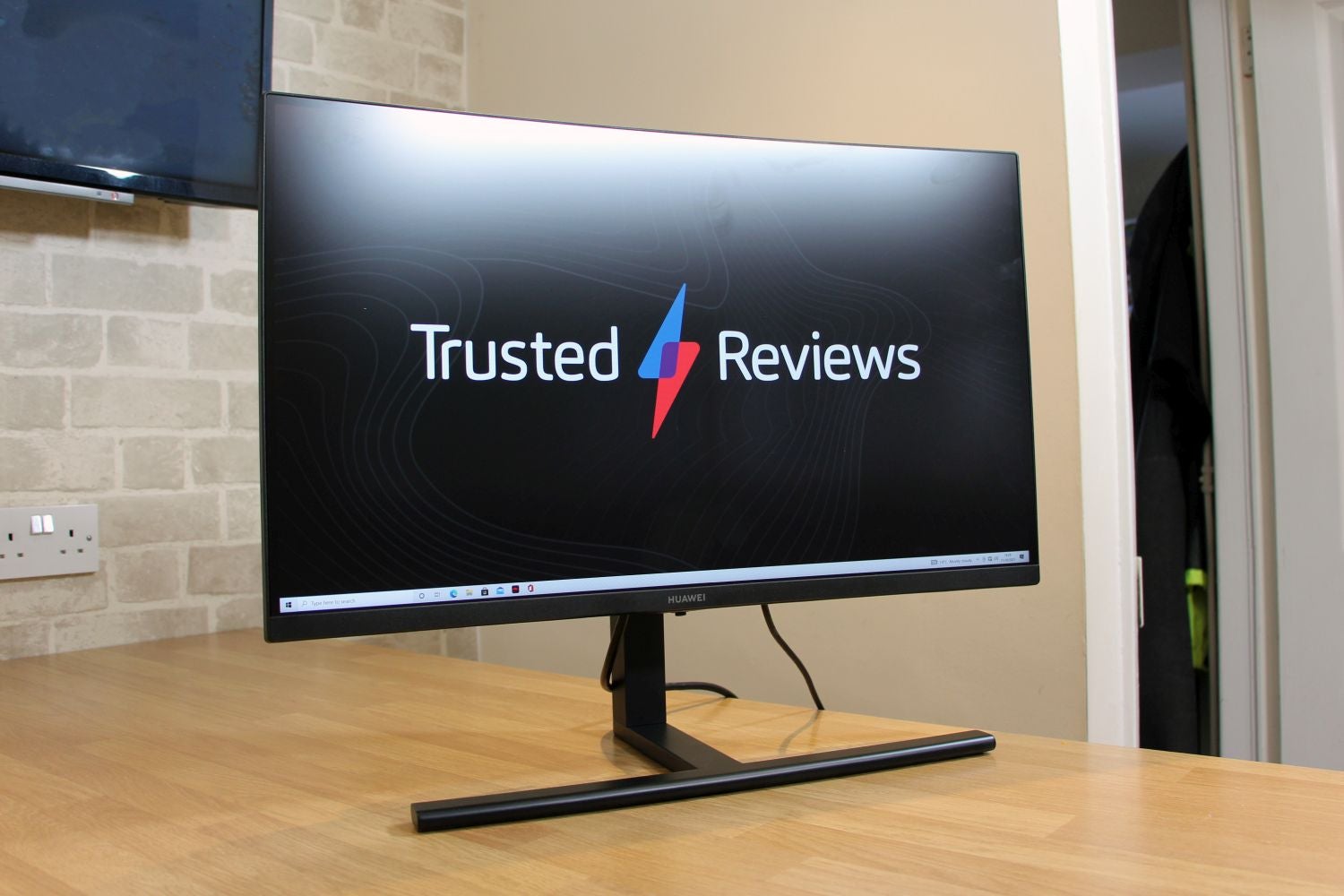The Huawei MateView GT 27 arrives with a rock-solid specification overall, and its decent contrast and sRGB colour abilities mean that mainstream games look great on this panel. Its motion performance isn’t good enough for high-end eSports, though, and the low price means that additional features are thin on the ground.
Pros
- Solid size, resolution, curve and refresh rate for mainstream gameplay
- Good sRGB contrast and colour quality
- Stylish, sturdy exterior
Cons
- Some noticeable ghosting
- Not fast enough for eSports
- Can’t handle HDR media
Availability
- UKRRP: £248
- USAunavailable
- EuropeRRP: €279
-
A stylish, curved designNot only does the Huawei MateView GT look great thanks to a sleek metal design, its core specification of a 2560 x 1440 resolution, a 27in diagonal and 1500R curve impresses too -
Good colour and contrastVA panel technology means that, alongside punchy contrast levels and impressive black points, the Huawei delivers bold, vibrant colours in mainstream games -
Mid-range motion performance The 165Hz refresh rate and 4ms response time are good enough for single-player games and mid-range eSports gaming, but eSports enthusiasts won’t be sated here
Introduction
Huawei is better known for its phones, but the firm has spent the past year or so trying to crack the monitor market – and the Huawei MateView GT 27 is its most affordable display yet.
This 27-inch gaming monitor will set you back a reasonable £249 in the UK and €279 in Europe, and for that mid-range money you get a curve, a solid refresh rate and some slick design. It isn’t available in the US currently. It’s the stablemate of Huawei’s larger 34in widescreen model.
My favourite affordable gaming display right now is the Dell S2721HGF. It’s another 27-inch panel with a subtle curve, and it’s cheaper than the Huawei at £207 / $229 / €245.
Design and Features
- A good-looking, sturdy exterior
- A 2560 x 1440 resolution and 1500R curve
- Underwhelming OSD and few additional features
Huawei’s previous displays have looked superb, and that remains the case with this more affordable model. This smaller MateView sits on top of a sleek, wide and elegant metal base, and the panel is attached to a cylindrical stand that continues the stylish theme. It certainly looks more mature than the angular, plastic Dell.
The Huawei MateView GT 27 is stronger than the Dell, too, thanks to robust design and the use of more metal throughout. It’s easy to build thanks to a tool-free mechanism that attaches the stand to the back of the panel, and its 7.8kg weight means that it’s only a kilo heavier than its rival.
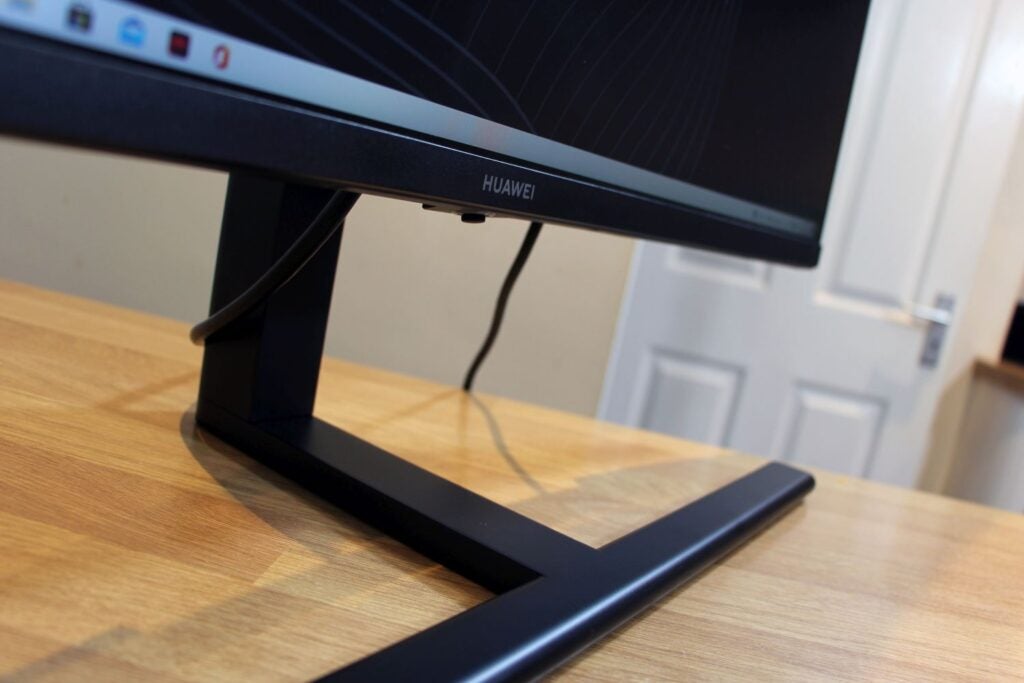
There’s plenty to like about the MateView’s specification, too. The 27-inch display has a 2560×1440 resolution that delivers a density level of 109ppi. That’s a good figure: high enough to make games look crisp, but not so huge that it will stress mainstream graphics cards such as the Nvidia GeForce RTX 3060 Ti and AMD Radeon RX 6700 XT.
Huawei’s screen also has a 1500R curve that combines well with the 27-inch diagonal to make games more immersive without compromising viewing angles.
Huawei’s underlying display uses VA technology with 8-bit rather than 10-bit colour support. That’s common across affordable gaming panels and fine for gaming, because VA displays tend to exhibit excellent contrast. The lack of 10-bit colour won’t be an issue for anyone except creatives.
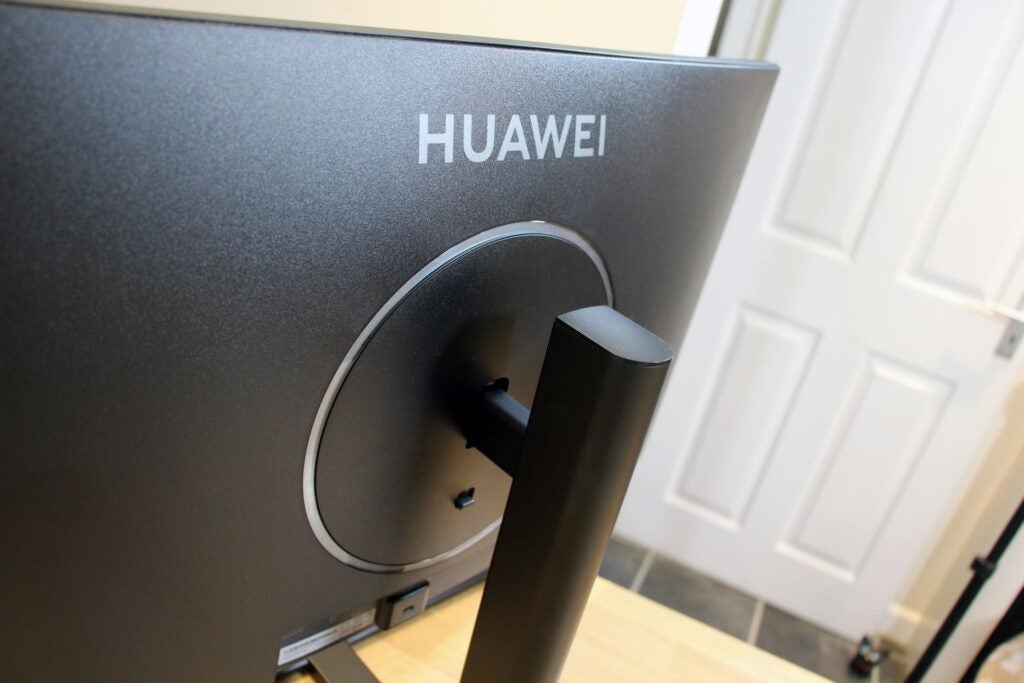
The MateView also has a 165Hz refresh rate alongside AMD FreeSync support, so you can benefit from smooth motion with both AMD and Nvidia graphics cards. That’s a mid-range figure that should make single-player games look smooth. It’s good enough for mainstream eSports gaming, too, but keen competitive gamers will need a 240Hz or 360Hz monitor.
The Huawei’s refresh rate sits alongside a response time of 4ms – another solid figure for mainstream use, but that won’t sate the keenest eSports players.
It’s a better specification than the more affordable Dell. Both share a 27-inch diagonal, a 1500R curve and underlying VA hardware; but the Dell’s 1920×1080 resolution isn’t as crisp as the 1440p figure on the Huawei. Dell’s panel has a weaker 144Hz refresh rate and the same 4ms response time.
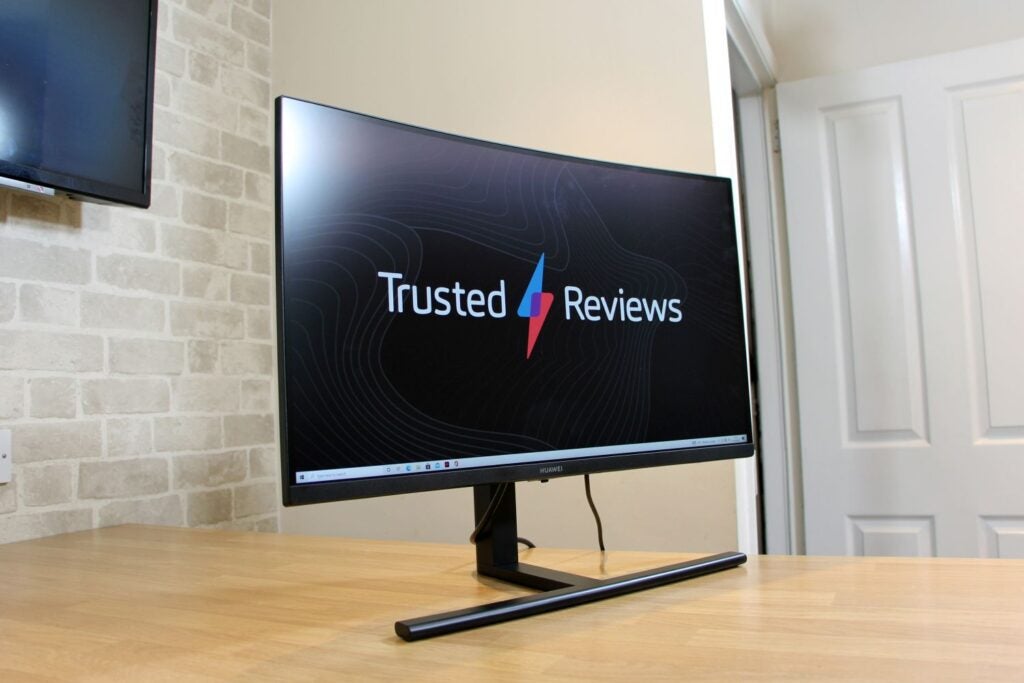
Huawei’s panel offers sleek design and a good mainstream specification, then, but it’s a bit more limited elsewhere. The MateView does come with 110mm of height adjustment, 25 degrees of tilt and support for 100mm VESA mounting, but you don’t get swivel movement and it doesn’t support use in portrait mode.
The monitor has a single DisplayPort 1.2 and HDMI 2.0 inputs and it’s powered by USB-C, but that’s it for extra features – you don’t get USB ports or speakers.
The on-screen display isn’t brilliant, either: it’s fast but basic, and the option to activate FreeSync is unnecessarily hidden away. That’s one area where the Dell is better: it might not have USB ports or speakers, but it does have a more intuitive on-screen display.
Image Quality
- Good contrast and sRGB colour accuracy and reproduction
- Not enough brightness or finesse to make a difference in HDR games
- Fast enough for mainstream games, but there’s noticeable ghosting
Huawei’s panel uses its VA hardware to deliver solid mainstream quality. Out of the box, the Huawei MateView GT 27 brightness level of 188 nits is fine for indoor gaming, and its black point of 0.07 nits is fantastic – it means that darker areas display genuinely impressive levels of depth and nuance.
The resulting contrast ratio of 2686:1 is only moderate for a VA panel and below Huawei’s stated 4000:1 figure, but it’s still a great result in the wider market and helps the panel deliver huge vibrancy in all situations.
The Huawei rendered an impressive 99.4% of the sRGB colour gamut with a volume of 120.6%. That means this display will produce every shade needed by mainstream games – and that volume figure combines with the contrast ratio to deliver plenty of vivacity. The Delta E of 2.61 is reasonable, if not perfect, but it’s fine for mainstream gaming, and the colour temperature of 6581K is great.
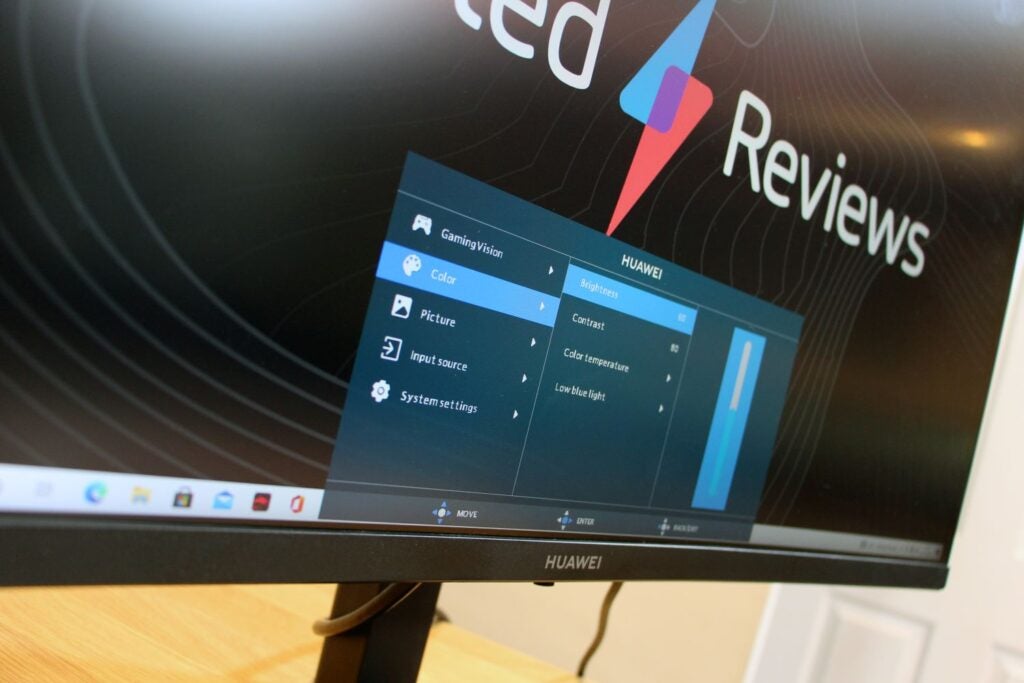
These colour results all bode well for gameplay, and mean that the Huawei renders colours with impressive punch.
The Huawei trades blows with its rival from Dell, however. The MateView offers slightly better colours thanks to broader sRGB gamut coverage, but the Dell displays marginally better contrast. Neither are deal-breakers, but it’s worth considering your priorities: do you want a wider range of colours or punchier output? Huawei’s machine does have more impressive uniformity: its backlight deviates by less than 10% in all sectors, while the Dell’s backlight strength declined by up to 21%. That makes the Huawei’s imagery more consistent.
The MateView rendered 85.5% of the DCI-P3 gamut, which is reasonable, but it’s below Huawei’s claimed 90% figure. And while the display does support HDR content, the mid-range DCI-P3 gamut coverage and the lack of sophisticated dimming means that there’s no real HDR benefit on this panel. Similarly, the maximum brightness level of 411 nits is good, but not high enough to make a significant difference.
The MateView is only middling with motion. When running at its default settings, the Huawei displays noticeable ghosting when bright objects move against darker backgrounds. If you use the screen’s top Overdrive mode then the situation improves, but the ghosting never disappears. You’ll not notice the problem during single-player games and in mainstream eSports titles, but if you want to concentrate on competitive gaming, you should look for a 240Hz or 360Hz screen with a better response time.
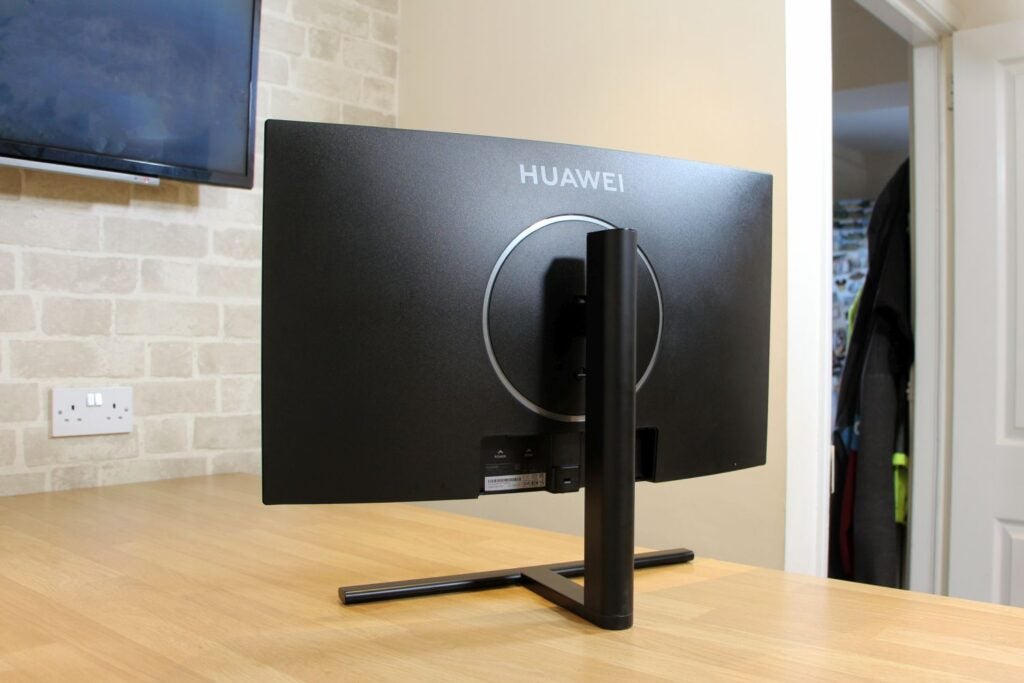
I’d always recommend that you use the MateView’s highest Overdrive settings, because that brings the Huawei’s ghosting performance in line with the Dell. Combine that with the Huawei’s better refresh rate and, overall, it means that the MateView is slightly ahead for fast-paced gameplay.
The ghosting and mid-range motion performance isn’t a surprise on an affordable 165Hz display. Huawei’s panel still has the speed and smoothness to handle mainstream games, though (including eSports titles), and elsewhere it delivers solid sRGB colours and uniformity.
Dell’s display might offer slightly better contrast, but the MateView’s colour quality, higher refresh rate and better resolution mean I prefer the Huawei for gaming – despite the extra cost.
The higher price means that the Huawei MateView GT 27 looks and feels better than the Dell, too, even though both lack extra features and extensive adjustability.
Latest deals
Should you buy it?
You want a high-quality, stylish 1440p gaming monitor for single-player gaming The Huawei’s resolution, contrast performance and colour quality mean that the best single-player games will look great on this panel, and you won’t be affected by ghosting issues.
If you’re on the hunt for a top eSports screen, or lots of extra features The Huawei delivers a mid-range refresh rate and response time performance alongside some ghosting, so eSports fans needn’t apply. It’s missing USB ports and some adjustment options, too.
Final Thoughts
The Huawei MateView GT looks great, and it has bright, bold colours and impressive contrast. Combine that with the resolution and curve, and you have a recipe for great single-player gaming. The panel’s motion performance isn’t good enough for keen eSports players, though, and it lacks additional features and some adjustability options.
How we test
We use every monitor we test for at least a week. During that time, we’ll check it for ease of use and put it through its paces by using it for both everyday tasks and more specialist, colour-sensitive work.
We also check its colours and image quality with a colorimeter to test its coverage and the display’s quality.
We use as our main monitor for at least a week.
We used a colorimeter to get benchmark results.
Used our own expert judgement for image quality
FAQs
The MateView has a two-year warranty as standard, and upgrades are available.
The MateView comes with a DisplayPort cable, power adapter and a hexagonal wrench – but no VESA mount nor HDMI cable.
If you buy this monitor you can claim six months of free Xbox Game Pass.
Trusted Reviews test data
Sustainability
Trusted Reviews holds the fact that global warming is not a myth as a core value and will continuously endeavor to help protect our planet from harm in its business practices.
As part of this mission, whenever we review a product we send the company a series of questions to help us gauge and make transparent the impact the device has on the environment.
We currently haven’t received answers to the questions on this product, but will update this page the moment we do. You can see a detailed breakdown of the questions we ask and why in our sustainability info page.
Jargon buster
Variable Refresh Rates
Variable Refresh Rate enable a game console/PC to send video frames as quick as possible to a display, with the screen adapting its own refresh rate in real-time to match the source, reducing visual artefacts and offering a more responsive performance
Refresh Rate
The number of times the screen refreshes itself per second.


















